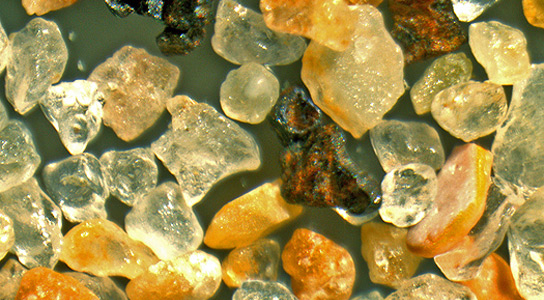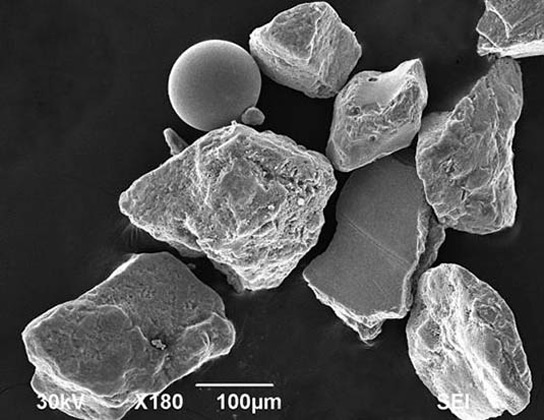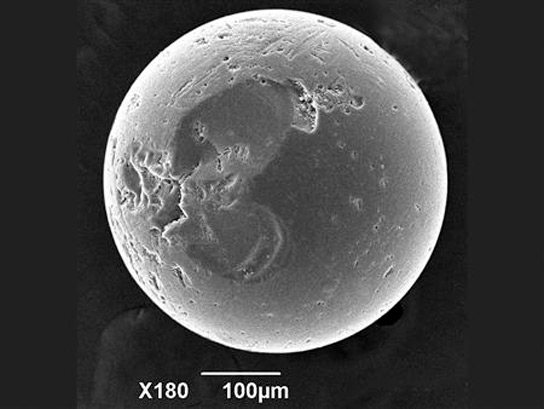
War sand lies among the beaches of Normandy.
War sand is sand that is a result from wartime operations. The beaches of Normandy are covered in a fine dust of particles resulting from the D-Day operations of World War II. The grains are hidden among the beaches of Normandy.
Geologist Earle McBride, from the University of Texas at Austin, states that up to 4% of the sand of the beaches of Normandy is made up of this shrapnel. The sand-sized fragments of steel are magnetic and easily discernible under a microscope. The artificial landscape of eroded machinery is still detectable using special instruments in the coastal dunes. At the present rate of deterioration, the magnetic particles will probably be wiped from the sands in another 100 years.

Waves, storms, and rust will wipe these spherical magnetic shards from the coasts. Earle McBride didn’t set out to find these shards, but a visit to Omaha Beach in 1988 resulted in the discovery of these tiny remnants of shrapnel. The shards were actually collected 20 years ago and only analyzed recently. The samples revealed that the jagged-edged grains had a metallic sheen and a rust-colored coating. The angular grains proved to be magnetic.
McBride published his findings in the journal Sedimentary Record.

Reference: “Shrapnel in Omaha Beach Sand” by Earle F. McBride and M. Dane Picard, 1 September 2011, Sedimentary Record.
DOI: 10.2110/sedred.2011.3.4








I have microscopic magnetic spheres at the bottom of my 475 foot deep well in the middle of Arkansas where no battles of any type were ever fought…let alone 45 feet in solid rock!